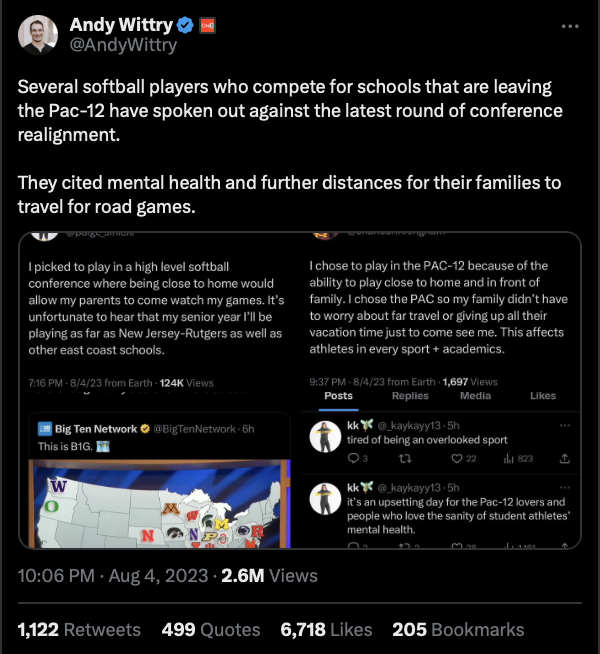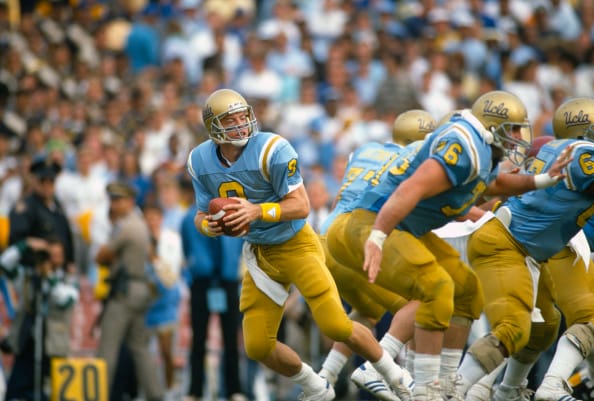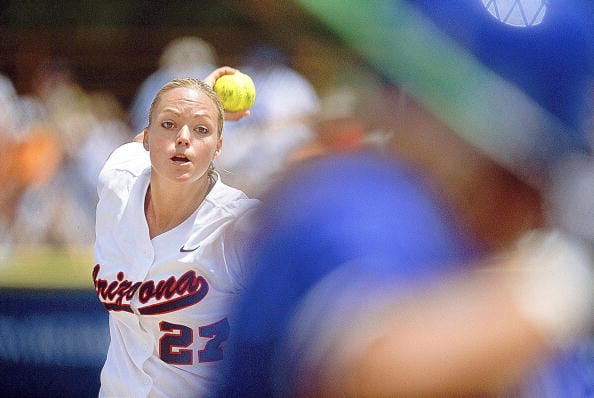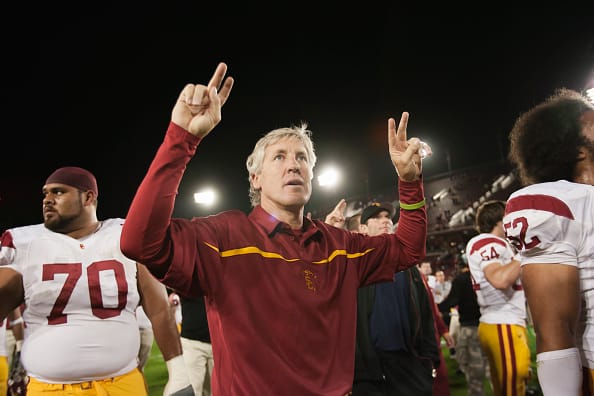© 2025 ALLCITY Network Inc.
All rights reserved.

The demise of the Pac-12 Conference has divided college sports fans into two camps. Traditionalists have lamented the death of a storied league that produced a wealth of great players, great coaches, great games and the most national championships of any college conference across all sports.
The younger set has embraced the modern dynamics of college sports which include NILs, a more lenient transfer portal and the pursuit of mega media-rights deals to keep up with the Joneses.
While neither side will admit it, both sides are right. The truth is rarely black and white. It’s almost always nuanced shades of gray.
It’s true that the Big 12 as a football conference is nowhere near as appealing after losing Oklahoma’s historic success and Texas’ mega brand to the SEC. TCU has had some recent success, but the Big 12 is a distant third to the SEC and Big Ten in strength of teams and strength of interest. Adding Colorado, Arizona, Arizona State and Utah isn’t going to remedy that.
It’s also true that the Big 12 as a men’s college basketball conference is going to be something to behold. Kansas, Houston, Arizona, Baylor, Texas and Kansas State make for a formidable lineup. Now imagine if the rumored pursuit of Gonzaga and UConn bears fruit.
It’s true that the Big 12 road trips won’t be nearly as appealing as the Pac-12. In terms of city attractions, you simply can’t lump Waco, Texas; Ames, Iowa; Stillwater, Oklahoma; and Lubbock, Texas in the same conversation as Los Angeles, the Bay Area, Seattle or Eugene, Oregon. Adding Boulder, Colorado and Tempe/Phoenix will be a major upgrade for the conference.
On the flip side, the Big 12 offers a chance to forge new rivalries. And more notably, it offers Pac-12 fans a glimpse of what real fan support and game-day atmosphere looks like. While the Big 12 may never match the picturesque settings of the Rose Bowl, Strawberry Canyon, Autzen Stadium and Husky Stadium, the Pac-12 never had much vibe on college football game days. The Big 12 brings it in rabid force.
While the Pac-12 has an incredible history of success in the two big revenue sports, it hasn’t won a men’s basketball national championship this millennium (the Big 12 has won two of the past three), and it hasn’t won a college football national championship since 2003.
While it’s true that the Big 12’s media rights deal will offer more money than Colorado, Arizona, Arizona State and Utah were ever going to get from Apple’s risky proposal, conference realignment has also created a very real hardship on displaced student-athletes that the football-and-basketball-are-all-that-matters crowd simply ignores.

You can debate the merits and drawbacks of this move all day, with valid points on either side. The bottom line — as much maligned ASU president Michael Crow outlined in this Q&A — is this: Once Oregon and Washington opted for greener pastures in the Big Ten, the Pac-12 was no longer viable. This move had to happen. It was about survival.
There’s a reason the Big Ten had little interest in the four schools that just moved to the Big 12, however. Like it or not, their brands are not as attractive as USC, UCLA, Washington and Oregon. Colorado, Arizona, Arizona State and Utah had to make this move, or risk getting left behind like Stanford, Cal, Washington State and Oregon State. The shake-up unwittingly exposed the caste system of college athletics; both within the Pac-12 and within the greater national landscape. Now that this system rules college athletics, you should be worried about what it means for the long-term viability of programs that do not tickle ESPN’s or Fox’s fancy.
The Pac was officially born in 1968 with eight charter members: USC, UCLA, Stanford, Cal, Oregon, Oregon State, Washington and Washington State. Ten years later, Arizona and Arizona State joined the conference. In 2011, after a failed pursuit of Texas and Oklahoma, Utah and Colorado joined the conference two years after Larry Scott was named Pac-10 commissioner. There was optimism that the Pac was positioned to maintain its perch as one of the nation’s premier conferences, but the next decade produced a series of bad internal decisions, coupled with the aforementioned trio of transformative changes on the college athletics landscape.
With the Pac-12 preparing for its final season of existence as we know it, let’s take a look back at an era when money didn’t rule every decision; a time when the Pac-12, Pac-10 and Pac-8 were producing stars and memories with every passing season.
Whether it was John Wooden’s UCLA Bruins, John McKay’s USC football teams, Linda Vollstedt’s ASU women’s golf teams, Rod Dedeaux’s USC baseball teams or Mike Candrea’s Arizona softball teams, the Pac has produced some genuine dynasties.
It’s impossible to name every great player or coach in the conference’s history. We won’t even try. Here’s a sampling of some of the greats from the football field, basketball courts, ball fields and the so-called Olympic sports. For purposes of these lists, we are only including names from 1968 on when the Pac was officially formed.

Pac-12 football greats
QBs: Troy Aikman, UCLA; Aaron Rodgers, Cal; Carson Palmer, USC; John Elway, Stanford; Jake Plummer, ASU; Dan Fouts, Oregon.
RBs: O.J. Simpson, USC: Marcus Allen, USC; Reggie Bush, USC; Charles White, USC: Steven Jackson, Oregon State; Christian McCaffrey, Stanford.
WRs/TEs: John Jefferson, ASU; Lynn Swann, USC: Keyshawn Johnson, USC: James Lofton, Stanford; Chad Johnson, Oregon State; Tony Gonzalez, Cal; Rob Gronkowski, Arizona.
O/D-Linemen: Jonathan Ogden, UCLA; Anthony Munoz, USC: Terrell Suggs, ASU; Steve Emtman, Washington; Randall McDaniel, ASU; Derrick Rodgers, ASU
LBs: Junior Seau, USC; Tedy Bruschi, Arizona, Pat Tillman, ASU, Rey Maualuga, USC.
DBs: Ronnie Lott, USC; Troy Polamalu, USC, John Lynch, Stanford; Kenny Easley, UCLA

Pac-12 basketball greats
- Lew Alcindor, UCLA
- Bill Walton, UCLA
- Gary Payton, Oregon State
- Jason Kidd, Cal
- Mike Bibby, Arizona
- James Harden, ASU
- Kevin Johnson, Cal
- Marques Johnson, UCLA
- Sean Elliott, Arizona
- Paul Westphal, USC
- Reggie Miller, UCLA
- Candice Wiggins, Stanford
- Lisa Leslie, USC:
- Kelsey Plum, Washington
- Cheryl Miller, USC
- Sabrina Ionescu, Oregon
- Cynthia Cooper, USC

Pac-12 baseball/softball greats
- Jenny Finch, Arizona softball
- Lisa Fernandez, UCLA softball
- Rachel Garcia, UCLA softball
- Kaitlin Cochran, ASU softball
- AJ Hinch, Stanford baseball
- Reggie Jackson, ASU baseball
- Mark McGwire, USC baseball
- John Olerud, Washington State baseball
- Dustin Pedroia, ASU baseball
- Barry Bonds, ASU baseball
- Randy Johnson, USC baseball
- Jack McDowell, Stanford baseball
- Mike Mussina, Stanford baseball
- Mark Prior, USC baseball

Pac-12 Olympic sport greats
- Matt Biondi, Cal swimming
- Henry Rono, Washington State track & field/cross country
- Steve Prefontaine, Oregon track & field
- Dwight Stones, UCLA track & field
- Jackie Joyner-Kersee, UCLA track & field
- Florence Griffith-Joyner, UCLA track & field
- Phil Mickelson, ASU golf
- Tiger Woods, Stanford golf
- Annika Sörenstam, Arizona golf
- Logan Tom, Stanford volleyball

Pac-12 coaching greats
- John Wooden, UCLA men’s basketball
- Tara VanDerveer, Stanford women’s basketball
- Lute Olson, Arizona men’s basketball
- Pete Carroll, USC football
- John McKay, USC football
- Rod Dedeaux, USC baseball
- Mike Candrea, Arizona softball
- Sharron Backus, UCLA softball
- David Durden, Cal men’s swimming
- Skip Kenney, Stanford men’s swimming
- Richard Quick, Stanford women’s swimming
- Don Shaw, Stanford volleyball
- Andy Banachowski, UCLA volleyball
Top photo of one of UCLA’s 10 national championship men’s basketball teams under John Wooden courtesy of Getty Images.
Comments
Share your thoughts
Join the conversation



